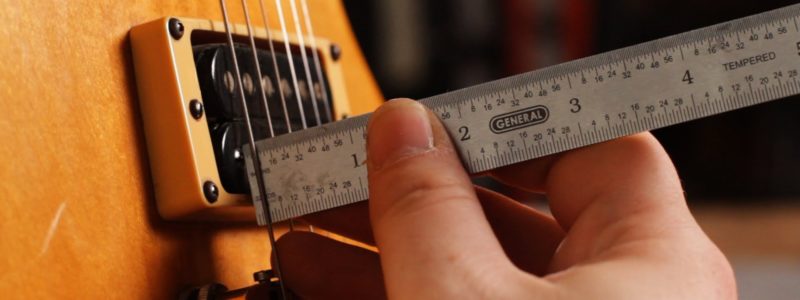
Guitar Setups & Repairs
What is a guitar setup and why is it important?
If you want to have guitar performing at its peak, the setup is vital. A guitar that has not been properly setup can be difficult to play and thus disheartening for the beginner. It’s also important for the longevity of the guitar to make sure the neck is in the correct position and doesn’t warp over time.
Guitar setups are available through me. Your guitar will be picked up, turned around in 24-48 hrs (unless parts are required) and returned to me. The cost is from $150 – $190 depending on the strings required. Service includes a new quality set of strings, Elixir where best suited. Sometimes additional work is required. Please read below for details about what is involved in a guitar setup.
1. Neck bow – truss rod adjustment
The amount of bow in the neck is the starting place for the setup. The neck needs to have a very subtle curve to it when viewed from the side – less than half a millimetre for most guitars.
This adjustment is not relevant to classical guitars, which have no truss rod in the neck. This puts the onus on the manufacturer to get the amount bow perfect without being able to use this feature for correction once the guitar has been built.
It is when setting the truss rod adjustment that deficiencies in manufacturing or changes in the neck and fretboard timber become apparent. Many cheaper guitars or those that have travelled large distances through changes of climate will require more intensive work as a result. Typically the cure for this is a ‘fret dress’ which can be more expensive than a standard setup.
2. String height at bridge or ‘action’
The next adjustment to be assessed is what’s commonly known as the guitar’s ‘action’. This is defined as the string height above the upper frets. An action that is too high or inconsistent across the strings will have a negative impact on how smooth and effortless the guitar feels to play. Conversely an action that is too low may cause the strings to buzz on the frets as they vibrate.
On acoustic or classical guitars the action is controlled by the height of the saddle within the bridge, which must be shaved down to reduce the string height. On some vintage fixed-bridge designs, the action can only be adjusted at either side of the bridge. Modern designs allow for independent adjustment to each string to more closely follow the profile of the fretboard.
3. String height at nut
Often overlooked, the action at the nut can have a big impact on playability – and on some guitars the intonation as well.
In general, when a manufacturer builds a production line guitar it is shipped with a basic light gauge string set (.009″ – .042″), and the slots in the nut are cut accordingly to accept these gauges. So when the player decides to go up a gauge or two, the strings sit up out of their slots and as a result the guitar feels more difficult to play. The remedy for this is to have the nut slots enlarged to accept the new string gauges, whereupon playability will return and the intonation will be consistent once again.
4. Intonation
The last adjustment to be made – the icing on the cake – is the guitar’s intonation adjustment.
This adjustment affects how consistently in tune the guitar is across all positions, both fretted notes and open strings. Intonation is impacted by all three areas discussed above.
Intonation can be controlled (or not controlled) in a number of ways:
- Acoustic/classical guitars: not adjustable due to the fixed nature of the string saddle
- Early electric guitars: basic ‘global’ adjustment available at either end of the bridge
- Modern electric guitars: independent adjustment to each string available